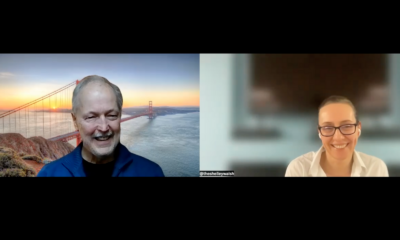SEO
Online brand protection: trusted automated monitoring is key

Even though consumers enjoy having the world at their fingertips, they have become all too aware of how much their personal data is abused. According to the Nielsen 2021 Trust in Advertising Survey, 36 percent of respondents distrust ads on social networks, while 36 percent distrust ads served in search engine results.
“As people more frequently shop online, they’ve realized the top ads are not necessarily the best option,” says Josh Stephens, director of Digital Marketing at CWT, one of the biggest travel companies worldwide. “If consumers do not recognize the company name, they will not pay attention, so the ads are becoming a sort of screen blind spot.”
Daniel Creed, head of marketing, planning and effectiveness at Santander UK adds: “As media (particularly online and social channels) attracts increasing public scrutiny and politicization, brands increasingly risk becoming embroiled in controversy seemingly by their mere presence on a given platform at the wrong time.”
Fraudulent behaviour
It is therefore critical all businesses ensure their branding, advertising, and marketing practice integrity, whilst also protecting themselves against the maleficence of advertising fraud.
The unauthorised use of a company’s intellectual property by a third party can create confusion with the customer base, and prospects in terms of business offering, financial model, and a company’s values.
Advertising fraud has become an unintended by-product of the digital era, and left unchecked, can become increasingly rampant. Take affiliate marketing for example – a successful strategy used by digitally-savvy companies but has its own risks.
Affiliate marketing
Even for well-known companies, working with affiliates helps them to tap into audiences outside their traditional channels. Affiliates provide brands and marketers with the opportunity to reach and engage their target audience, creating not only an opportunity for acquisition, but also the opportunity to develop long term relationships with their audiences because of a trusted introduction and recommendation.
However, where traditional channels and affiliates often collide is in paid search, necessitating monitoring to prevent cross-channel cannibalization. “Brands today have become very adept at using paid search as a source of high intent traffic – particularly branded search,” says explains Van Chappell, general manager at BrandVerity, a US-headquartered company which provides paid search and affiliate monitoring tools.
He notes that when affiliates also appear on a search engine’s results page, they “compete” with the brands paid search team, driving up the cost of that traffic. “It is also unlikely that traffic from branded search is incremental to traffic the brand would get anyway,” Chappell says.
Chappell also says that “ad hijacks” sometimes occur. “We see affiliates which copy the ads already utilized by brands,” he says. “The consumer types in a search term, they see a search result and it looks like the brand they were looking for – they click on the ad, and it will take them to the site, and so to the user, everything’s fine.”
Behind the scenes
Everything, however, is not fine. Even though the brand will ultimately win the sale, this detour on the consumer journey bears a greater cost for the company. This is because the commission paid to an affiliate is considerably more than the CPC a paid search team pays to a search engine.
There is also an underlying cost to a company’s reputation among affiliates and, ultimately, their brand. “The affiliate channel is very important for brands; it’s a great marketing channel because it is performance based,” Chappell says.
“Affiliate managers, agencies and OPMs spend a lot of time cultivating these relationships and making these connections between publishers that come up with really interesting ways to reach consumers and the brands where those consumers then make purchases.”
Chappell adds a poor reputation “drives quality publishers away”. “It’s damaging for the channel and makes it much harder to have a successful affiliate programme,” he says.
When a brand has a clean and well run affiliate channel in place, it attracts the best partners, which promotes the brand and enables it to reach new audiences.
Chappell expands on the benefits further: “In many ways, some of these techniques [in affiliate fraud] can lead to distraction and lead you to places that you didn’t intend to go. If a brand can keep the search engine clean of all these distractions, the consumer clearly knows where they can go to do what they wanted. It’s a better experience for consumers.”
Keep it clean
Santander’s Creed believes it is not the customers’ responsibility to make the distinction between a platform getting it wrong and brands not taking precautions.
“The onus is on brands to ensure they are making informed decisions and are taking the necessary steps to mitigate and minimise these risks,” he says. “Brands need to understand the risks attendant to each media channel and develop a comprehensive policy for the protection of their brand and evolve the right tactics to protect themselves.”
To maintain a clean affiliate model, companies must monitor their affiliates. There are two ways to do this: manual monitoring and automated monitoring.
The former, for example, involves an affiliate manager typing branded or non-branded keywords into a search engine and monitoring the adverts which appear.
There are numerous challenges to this approach, however. Not only is it time-consuming, but it is also arguably ineffective given fraudulent adverts often look identical to their genuine counterparts. It is also impossible to capture varying search engine results from just one location using manual monitoring.
Automated monitoring, on the other hand, means all associated affiliates are monitored from one place around the clock. If a false advert appears, brands can crackdown on unsavoury partners quickly, while protecting the customer journey and keeping their marketing budget intact.
In doing so, the brand reputation remains intact which helps them to attract the most successful affiliates. This in turn further promotes the brand in a virtuous cycle that continues to feed upon itself.
Marketing in the digital era promises boundless opportunities, but brand protection is more complex than ever. Fortunately, with the right tools in place, the results become clear.
Source link

















You must be logged in to post a comment Login